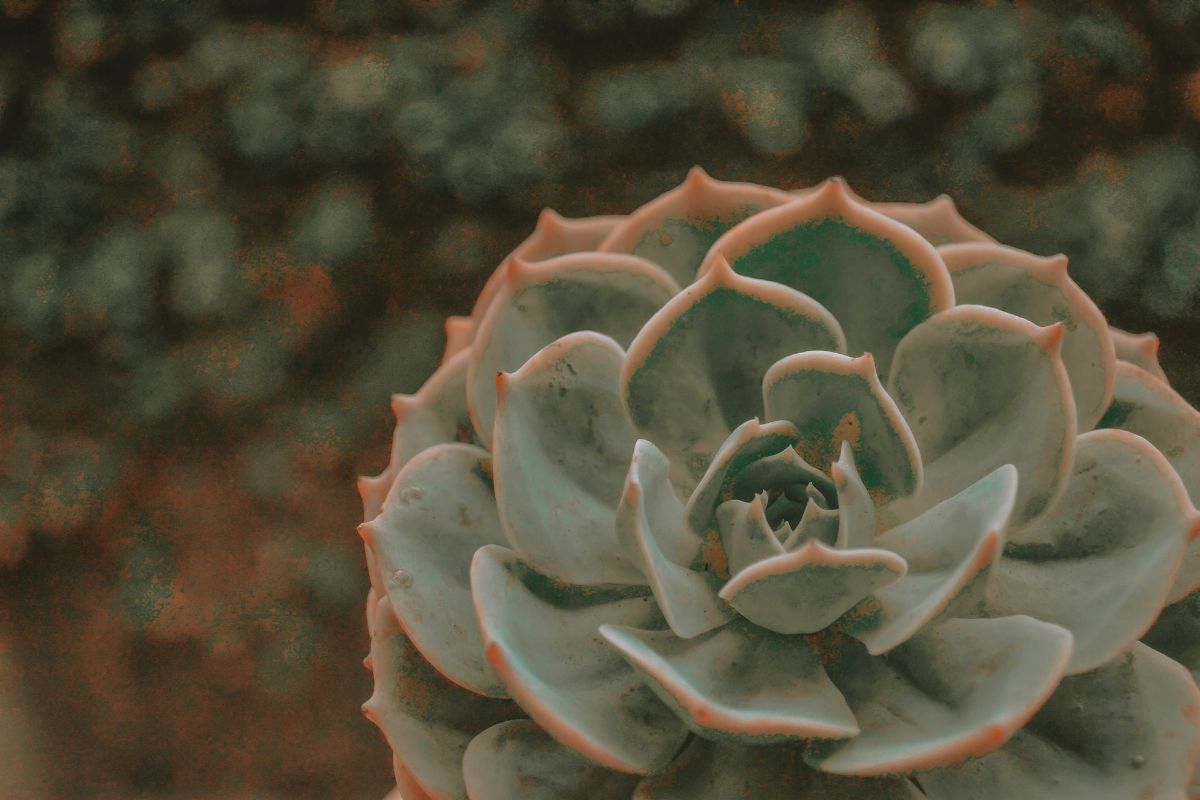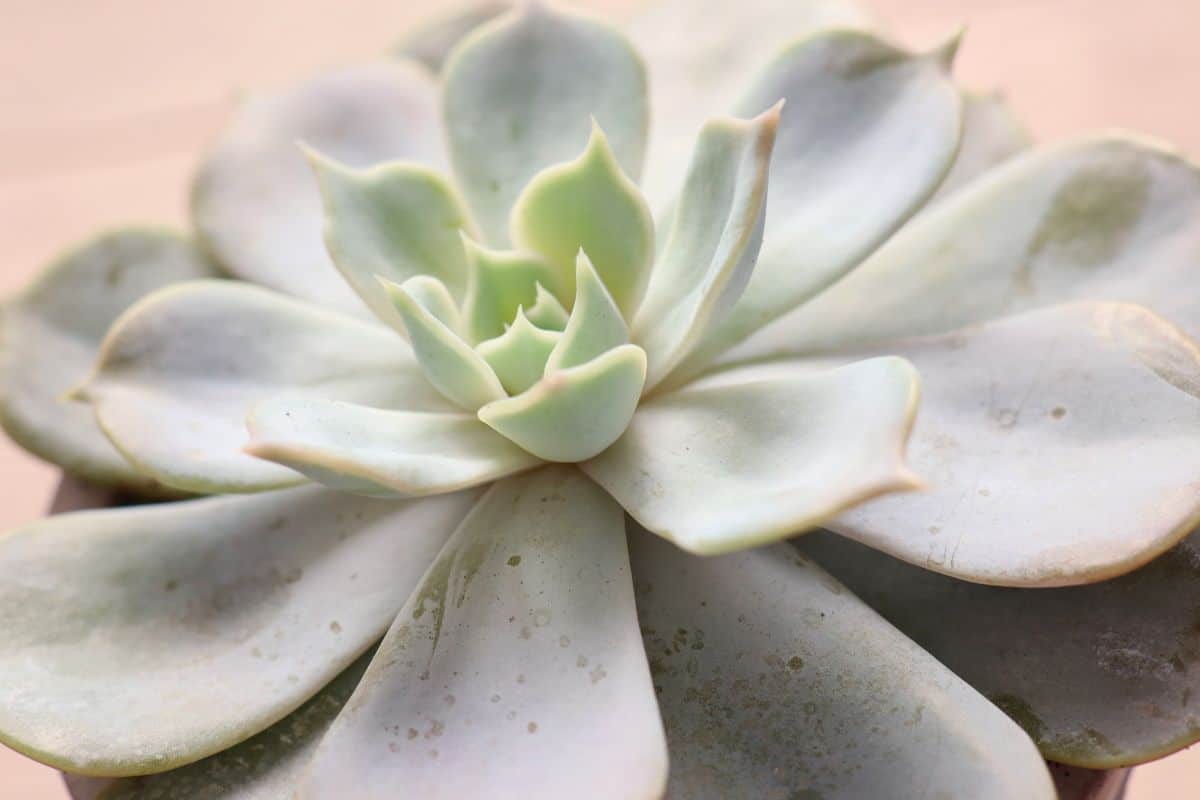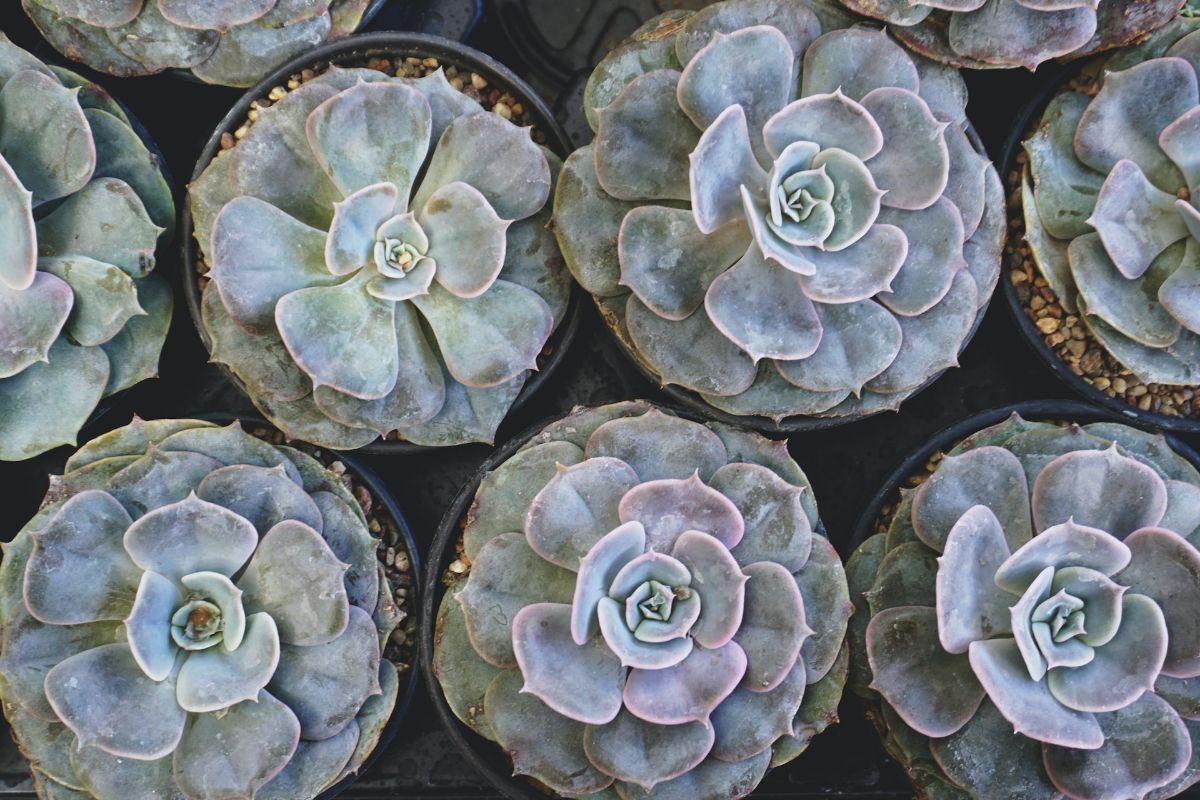
Within succulents, echeverias are one of the most varied plants you can find. AND among them there is one called the "ghost flower". We refer to the Echeveria lilacina.
But what do you know about this plant? Do you know its characteristics? How does it bloom? Maybe care? Below we present a guide so that you can get to know it in depth and discover everything about it.
How is the Echeveria lilacina

There is no doubt that almost all echeverias have a very similar pattern in their shape. And this one is no different from the previous ones. It is a not too large plant, at least in height, which takes the shape of an open artichoke. Its maximum height size is around 25-30 centimeters alone. For his part, widthwise it can measure the same, between 25 and 30 centimeters. Although, if it scares you that it grows so much, we will tell you not to worry, because it is very slow.
It is silvery gray in color although sometimes it can turn white, but in the colder months you will see that it changes color to a more purple or lilac color. In fact, in summer, or if you put it in the sun, it may also change throughout the seasons.
As for the flowers, which we already told you is very, very easy for them to bloom, you can throw them red, orange or pink. But what most attracts the attention of these are the edges that will not be in that hue, but in yellow. For it, develops a rather long stem (reaches 15 centimeters) in the center of the rosette from which the flowers will emerge at the end.
Echeveria lilacina care

Whether you live in a fairly hot (and low humidity) area, are not good with plants, or don't have a lot of time to dedicate to them, echeverias (and succulents in general) can be a good choice. option to have flowering plants. But you have to know how to take care of them.
In the case of Echeveria lilacina, the care you should provide is as follows:
Lighting and temperature
Like the good echeveria that it is, it loves light. And the sun. Also, in order for it to maintain those beautiful and representative colors of the plant, you need to put it in a place where it receives at least 4-8 hours of direct sun and the rest of indirect light. This way you ensure that it receives what it needs to grow ideally without burning its leaves (which means that you must avoid the sun from 12pm to 6pm in summer).
And you will also get the colors to intensify.
As for the temperature, your ideal would be between 18 and 27 degrees. But you shouldn't worry too much either, because In general, it supports both high and low temperatures.
Of course, in the case of casualties, it is not recommended that you spend a lot of time with them without protecting it, because the plant can die very quickly.
Substratum
As you know (and if we don't tell you), echeverias and succulents adapt to almost any soil you give them as long as it is accompanied by good drainage. This can be perlite, but also tree bark, volcanic rock, gravel...
A good mix that you can do is with universal substrate, earthworm humus, gravel, perlite and river sand.
Irrigation

Echeveria lilacina It is one of the many echeverias that accumulate a lot of water in its leaves., which means that watering does not have to be as constant as with other plants. In addition, by extending horizontally it preserves water deposits even better.
Therefore, when it comes to watering, the truth is that you should not worry. As long as you water it every 8-10 days in summer, and every 2-3-4 weeks in winter, it will be more than satisfied.
In these cases it is better to water less than to go too far.
Of course, you must be careful with pouring water over the leaves because the only thing that will cause is that there are fungi. And that is interpreted in plant diseases. To avoid them, always try to water on the substrate and, in case you can't, then pour it underneath, not leaving the dish too long (so that the roots don't rot).
Subscriber
Although it is not common in echeverias, if you want, and always optionally, you can add a fertilizer once a month with half the dose described by the manufacturer in irrigation water. This should only be applied in spring and summer.
Pruning
Another of the cares of the Echeveria lilacina that you are going to save. It does not need you to prune it beyond removing the dry leaves. You can remove them by pulling gently or, if they are still tight, with a knife or scissors.
Multiplication
The Echeveria lilacina is a very "solitary" plant, in the sense that it is difficult for it to produce suckers or shoots that you can cut and plant to obtain new plants.
Therefore, One of the most common forms of propagation is through the leaves. These are very easy to get and all you have to do is take one that looks healthy, always cut it from the base and let it dry (so that the cut you have made heals).
After three days you can put the leaf on top of a pot with a good substrate (the one it should have). You don't have to plant it or cover it, just leave it there. In a matter of days, the leaf will develop roots and start to put out a new plant.. Only at that moment when you see it can you throw a little earth around it to bury it.
When watering it, try to do it with a sprayer.
In 4-6 weeks you will have the sheet already with that new plant and it will only be left to start growing.
Now you know more about the Echeveria lilacina and as for its price we must tell you that it is quite cheap. Normally in stores you find them in small formats, but you can always check second hand (people own and sell when they play it) because they can be even cheaper or even larger than you find them "new". Do you dare to have one at home?